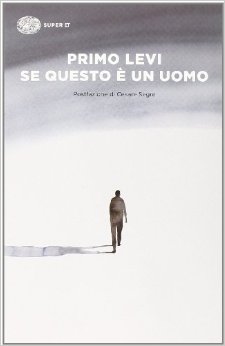by Federica Latora, 3A
To commemorate the International Holocaust Remembrance Day, on Tuesday 27th January my class and I took part in a meeting in the conference room of our school. The speaker was Mr Ruggero Zanin, history and philosophy teacher of the BF secondary school. On this day we commemorate the victims of the Holocaust, also known as the Shoah. It was a genocide carried out by the Nazi regime and its Allies. Most victims of all ages and social classes were a population whose crime was being descended from a Jewish relative. From 1941 to 1945, they were deported to concentration and extermination camps. Approximately eleven million people died, including six million Jews. Seventy years ago, on 27th January 1945, the Soviet Red Army liberated two of the most important concentration camps in the Polish cities of Auschwitz, Birkenau and Monowitz. Also in Italy there was a concentration camp, called Risiera di San Sabba in Trieste.
The Holocaust should be recognized as a turning point in world history, a catastrophe, which informed artistic sensibilities. At the end of World War II historians, writers and artists would begin to document and interpret the Holocaust and explore the peculiarity of human nature revealed in those tragic years. So that we might come closer to comprehension through the efforts of writers.
Mr Zanin read short passages from books written by Jews who were Holocaust survivors. First of all he read the poem that introduces the book If This Is a Man, written by Primo Levi, an Italian Jewish chemist, who was deported to the Auschwitz extermination camp.
 You who live safe
You who live safe
In your warm houses,
You who find, returning in the evening,
Hot food and friendly faces:
Consider if this is a man
Who works in the mud,
Who does not know peace,
Who fights for a scrap of bread,
Who dies because of a yes or a no.
Consider if this is a woman
Without hair and without name,
With no more strength to remember,
Her eyes empty and her womb cold
Like a frog in winter.
Meditate that this came about:
I commend these words to you.
Carve them in your hearts
At home, in the street,
Going to bed, rising;
Repeat them to your children.
Or may your house fall apart,
May illness impede you,
May your children turn their faces from you.
Mr Zanin defined the focus of Primo Levi’s book as scientific, because Levi observed the effects of a sort of terrible experiment on prisoners in Auschwitz. The goal was to verify the extreme limits of human survival. Levi studied the behavior of many prisoners. One of those was called Null Achtzehn, that is no. 018 in German, after the last three numbers assigned in the concentration camp. That prisoner represented “indifference” because he executed all the orders that he received but could not be considered a man any more.
In the pages of another book, The Drowned and the Saved, Levi attempted some interpretations and tried to find some reasons for an act of genocide, for which there can be no explanation.
Another novel mentioned by Mr Zanin was Necropolis, written by Boris Pahor in which he described his own Holocaust experience. Especially he described the indifference of a group of beautiful German girls, who turned away their beautiful eyes when they saw him underfed and in need of help but did not help him only because he was a Jew.
The last book that Mr Zanin mentioned was The Kindly Ones, written by Jonathan Littell, a young American Jewish writer. In his book he narrates the fictional story of Maximilien Aue, an SS officer who helped to carry out the Holocaust.
All these writers provide us with many important lessons that can help prevent such crimes from happening again. The challenge is to ensure that those lessons are remembered, shared and applied. In this way, the world can honour the memory of those our ancestors failed to protect.